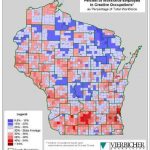Economic Restructuring Activities in Downtown Revitalization
The Main Street Four-Point Approach includes organization, design, promotion and economic restructuring (ER). Economic Restructuring involves strengthening and diversifying the economic vitality of the business district. It is the ultimate goal of all Main Street revitalization programs. This article summarizes some of the ER activities and their use and effectiveness. It is based on literature from the National Main Street Center
as well as recent research by Kent Robertson at St. Cloud State University.












